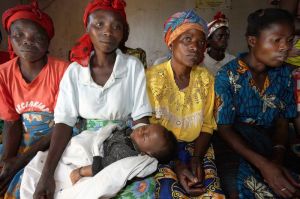Twenty years ago this spring Morley Ballantine (then the Herald’s editor) gave me the responsibility of writing a column on human population issues. I want to take this opportunity to give an update on population and to thank some of the people who have been involved.
I believe that this is the only regularly appearing newspaper column about issues of human population. Indeed, it is probably the only regularly appearing treatment of this most important subject in any medium. It started as an idea for a book with short chapters, each with a verb in the title, and with a positive message about what individuals can do about population. Gail, my wife, and I were able to think of just 17 chapters initially and we worried that there might not be enough content for a whole book. About 240 essays later I have a long list of possible future topics!
Bill Roberts has been my editor and friend throughout these two decades. We seldom see each other, but have mutual respect. Bill has been great in keeping me in line: “stick to the subject†read one of his emails. Richard Ballantine has taken over his mother’s concern for population. He has provided support not only for these columns but also financial support through the Ballantine Family Fund for relevant events in our community.
For several years a group observed World Population Awareness Week in Durango. We brought in speakers and had events—but too often they competed with the wonderful Lifelong Learning series at Fort Lewis College. Fortunately Rich Hoehlein, organizer of this series, has agreed to have occasional talks on topics related to population rather than splitting the audience.
Gail is my first sounding board. I trust her reaction to an idea or draft article more than my own. She finds mistakes in drafts that I’ve been over many times, and comes up with solutions to writing problems. I am lucky to have such a talented writing partner.
When Population Matters! first hit the press, world population was about 5.7 billion; it has increased by a billion and a half to 7.2 billion in the past 20 years. This rapid increase is partially due to the International Conference on Population and Development, which shifted the focus away from population. The word “population†was tinged by a past history of coercion; instead the Conference focused on “reproductive healthâ€.
Now we can measure the consequences of population and consumption using the “Ecological Footprint†concept, and have discovered that we are using resources much faster that the planet can provide. We also know that climate change is a repercussion of population growth, as are the decreasing numbers of wildlife and loss of species.
We have made many improvements in family planning since 1995. Emergency Contraception has helped prevent unplanned pregnancies. EC was rarely prescribed 20 years ago, but now EC pills are available in over 50 countries, in many without prescription. We have recognized Long Acting Reversible Contraception (LARC) as being much better than methods that require daily or weekly usage. Another LARC, a new IUD, will soon be available.
The Affordable Care Act (“Obamacareâ€) has taken a positive step to lower our high unintended pregnancy rate. It provides contraception without co-pay for any enrollee. (Unfortunately it does not pay for vasectomies!) An experiment in Colorado showed that it is possible to lower the teen pregnancy rate (and to decrease the number of abortions) by providing LARCs without charge to uninsured women. Unfortunately, a Colorado legislature killed funding to continue this program.
Even before EC pills were available without prescription it was possible to get them over the Internet. This same model is being used to provide birth control pills. But isn’t “the pill†dangerous? There are some risks with hormonal contraception, but a study in England has shown that women who used oral contraceptives, on average, lived longer than women who did not. Planned Parenthood has been providing pills safely for years to women without an exam—just a blood pressure reading. This miracle medicine is now available at: https://www.prjktruby.com for just $20 per month. This fee also helps to pay for birth control for women in the developing world, thanks to PRJKT RUBY.
My sense is that people are becoming more aware of population issues. FP2020, the program to provide quality family planning services for many of the world’s poorest countries, is a barometer of this change. My hope is that the USA will continue to see programs that will lower our high unintended pregnancy rate.
© Richard Grossman MD, 2015
PS: I have been distributing these monthly columns by email to people all over the country–and a few outside the USA. I promise only one email a month. If you would like to be added to the listserv, please contact me at: subscribe@population-matters.org
Thanks!
Richard

